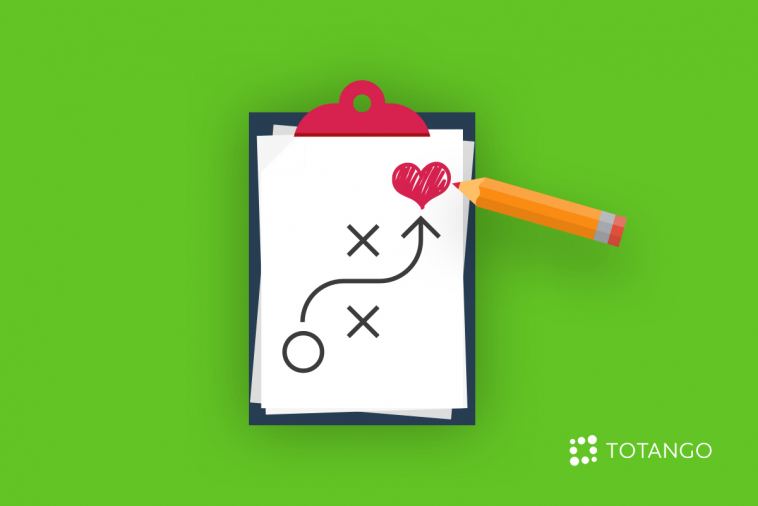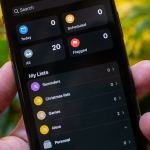- Like
- SHARE
- Digg
- Del
- Tumblr
- VKontakte
- Flattr
- Buffer
- Love This
- Save
- Odnoklassniki
- Meneame
- Blogger
- Amazon
- Yahoo Mail
- Gmail
- AOL
- Newsvine
- HackerNews
- Evernote
- MySpace
- Mail.ru
- Viadeo
- Line
- Comments
- Yummly
- SMS
- Viber
- Telegram
- JOIN
- Skype
- Facebook Messenger
- Kakao
- LiveJournal
- Yammer
- Edgar
- Fintel
- Mix
- Instapaper
- Copy Link
When your product directly helps your customers achieve their goals, your brand wins their loyalty. Playbooks for customer success managers help drive processes that promote winning client outcomes. Building automation into playbooks helps the customer success team produce repeatable, winning results for clients at every stage in their customer journey. Here’s a look at what customer success playbooks are, why you need them, and how you can use them to deliver your clients the results they expect.
What Is a Customer Success Playbook?
Customer success occurs when your product helps your customers achieve the desired outcomes which led them to buy from your brand. Customer success management is the practice of systematically nurturing customer success through standard operating procedures that follow best practices. A customer success playbook is a game plan which lays out the specific procedures you will use to help an individual customer or group of customers achieve their goals.
Why Do You Need Playbooks for Customer Success?
Promoting desired customer outcomes through success playbooks confers multiple benefits:
- Customer experience improves by reaching out at the right time in their journey
- With an improved customer experience, churn rates decrease, increasing retention
- Successful customers become more likely to make cross-sell and upsell purchases
- Average customer lifetime value increases
- Satisfied customers become more likely to promote you to others, increasing referral leads and revenue
- Workflow efficiency increases, saving you time and labor and lowering your expenses
These benefits combine to promote higher profitability, making a compelling case for adopting customer success playbooks.
How Do You Use Playbooks For Customer Success?
Customer success playbooks perform best when combined with best practices. These include:
- Define success goals for each journey stage
- Plan for each stage of your customer journey
- Include digital and human engagement strategies
- Deliver the right message at the right time by segmenting customers
- Keep your playbooks current through monitoring and feedback
Follow these guidelines to get the most out of your customer success playbooks.
1. Define Success Goals for Each Journey Stage
For each stage of your customer journey, set goals that represent successful outcomes for your customer. For best results, goals should be expressed in terms of quantifiable key performance indicators so that you can establish benchmarks and measure progress.
For example, say that you provide an app for human resources teams and one of your features facilitates a faster review of resumes. You might set a goal of achieving utilization of this feature by 95% of your customers within 30 days of adoption. To achieve this goal, you could track usage and set up an email drip campaign to prompt customers who aren’t using the feature with reminders and tips.
2. Plan for Each Stage of Your Customer Journey
Obstacles to success can emerge at any stage in the customer journey. A thorough customer success playbook should include plans for each stage in your customer’s experience. Here are just a few examples:
Onboarding
- Initiate handover from sales to customer success team and gather relevant data
- Alert CSM or Onboarding manager to customer(s) delayed in onboarding
Adoption
- Schedule Executive to Executive meeting
- Usage for key feature has dropped X% – make contact with the account
Escalation
- Low NPS from key contacts – review customer account and initiate follow-up
- Conduct post-resolution escalation meeting – ensure things are on track
Renewal
- Initiate win-back campaign steps for at-risk customers
- Send renewal notice
Preparing for success at each of these stages in your customer journey will reduce potential barriers to desired outcomes and increase the likelihood of success renewal and retention. Keep in mind that not all playbooks will be customer-facing, many will be internal steps for your team members to take.
3. Include Digital and Human Engagement Strategies
An effective success playbook should encompass both digital and human forms of customer engagement. Issues that involve routine matters can be handled efficiently through automation.
Matters which cannot be handled routinely and require human assistance can be routed with the use of automated tools to help pull up relevant customer data and notify the appropriate personnel. This approach is suitable for matters which need customized assistance or which involve high-revenue customer accounts.
4. Deliver the Right Message at the Right Time by Segmenting Customers
Success playbook strategies depend heavily on automated communication with your customers. You can communicate more effectively by customizing messages for specific segments of your customer base and setting up your automated plays with personalized messages so that the appropriate messages only go out to customers who engage in specific trigger actions.
You can segment your customer base according to different types of criteria such as:
- Customer Journey Stage: Target customers who are within 90-days of the upcoming subscription renewal date.
- Engagement Model: Segment customers based on whether they require low-touch vs. high-touch engagement. Low-touch engagement is typically used for volume customers with low recurring revenue and uncomplicated rollouts, while high-touch engagement typically applies to high-value customers who need frequent one-on-one assistance for complex needs.
- Industry: The customer’s use case and adoption of your product features may vary based on your customer’s industry. For example, financial software will have heavier use of certain features during the end of the month, quarter, and year.
This type of segmentation makes your playbooks more effective by allowing you to define automated workflows and communications for specific customer categories. For example, you can set up different workflows and messages for customers who have completed onboarding and those who have not. Another application would be sending specialized messages to customers who are at high risk of churn. By delivering the right message at the right time, you can promote more successful outcomes for your customers.
5. Keep Your Playbooks Current through Measuring Impact and Feedback
An effective playbook needs to be adaptable to keep up with changes in your customer’s situation and in your market. Use KPI monitoring and feedback from your customers to evaluate how well your current playbook is working. If you identify issues that need to be addressed, update your playbook accordingly.
Use Playbooks for Customer Success to Deliver Winning Outcomes for Your Clients
A customer success playbook maps out a path to winning outcomes for your clients at each stage of their journey with your brand. Using a playbook to guide your customers to successful outcomes increases their satisfaction, making them more likely to buy from you again and more likely to promote you to others. You can implement playbooks for customer success by mapping out your customer’s journey, setting goals for each stage and using a combination of digital and human engagement strategies to achieve desired objectives. Using automation to segment customers and track the customer experience can significantly increase the efficiency of your playbook deployment.
Choosing the right software tool to support your customer success playbook can determine the success of your strategy. Totango Spark uses an early warning system to trigger notifications and required actions when customer status changes occur. KPI Scorecards are built into a comprehensive dashboard to enable easy monitoring of progress across all customers by journey stage, customer success manager, and more.
Register today to see a live demo, or try Totango for free and experience for yourself how Spark can help you use success playbooks to deliver winning results to your customers.



